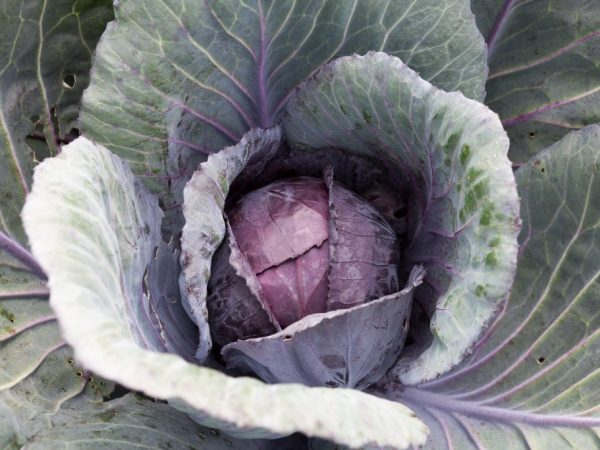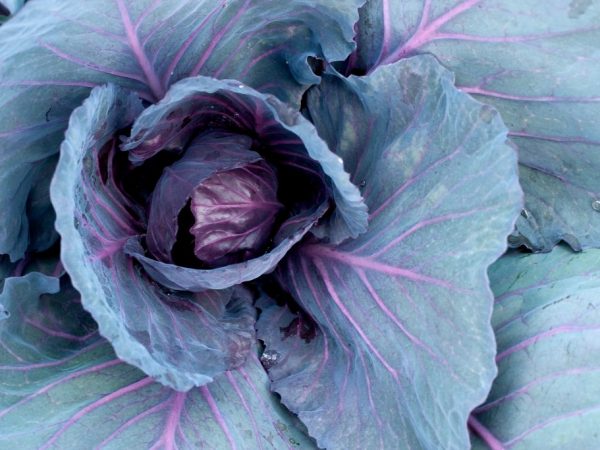The benefits and harms of blue cabbage
Blue cabbage is rich in healthy ingredients; it is suitable for making salads and marinades. The vegetable is planted in the garden or in the greenhouse all year round, the head of cabbage is stored in the cellar from autumn to late spring. Sometimes this variety is called red and blue-headed.

The benefits and harms of blue cabbage
general characteristics
Blue cabbage is native to the hot Mediterranean countries. It is possible to grow seedlings in both cold and warm climates, if conditions are created for its rapid growth: to organize watering or additional lighting in the greenhouse. Blue cabbage is similar to the usual white cabbage, it contains many useful vitamins and minerals.
The color of a vegetable depends on a particular variety: the leaves can be light blue and bright red with a purple tint. The taste of the vegetable is spicy and sweet, the leaves are watery. The veins in the leaves are tough, so the upper layers of the head of cabbage hold their shape well.
General composition
A juicy vegetable consists of a large amount of water (60-70% watery). If during the growth of the head of cabbage it is well watered, the amount of moisture in the head reaches 90%. In blue-headed culture, there is 2 times more fiber useful for the human body than in white-headed culture.
Head of cabbage composition:
- Vitamin complexes. The benefits of a vegetable are determined by the amount of vitamins it contains. Blue cabbage is rich in B vitamins: they help improve a person's appearance and strengthen their immune system. The composition of red cabbage contains vitamins PP and C. Vitamins A and E have a beneficial effect on the body of an adult or a child, they are contained in a head of cabbage.
- Microelements. The head of cabbage contains potassium. It promotes metabolic processes in the body and restores the digestive tract. Iron, which is part of red cabbage, helps to improve the functioning of the digestive system.
The unique composition of the vegetable allows you to use it every day: contraindications are individual, and allergic reactions to the components of the vegetable are very rare. Red cabbage got its name due to its color: enzymes that contain blue leaves help to strengthen blood vessels.
The calorie content of the product is small: 0.31 kcal per 1 g of vegetable. The low calorie content of cabbage is appreciated by nutritionists who prescribe freshly prepared cabbage salads to people who are losing weight.
The benefits of a vegetable
The health benefits come from its rich composition. Vitamins and trace elements support metabolic processes throughout the body.
Thanks to the phytoncide contained in caprust, its use is an effective prevention of tuberculosis. Cabbage juice helps with lung diseases.

Blue cabbage has medicinal properties
Other useful properties of the product:
- treats chronic bronchitis and acute respiratory infections;
- fights hypertension;
- lowers blood pressure due to the large amount of potassium;
- strengthens the cardiovascular system;
- strengthens the walls of blood vessels;
- used for quick sobering up;
- heals wounds;
- helps with jaundice and skin diseases;
- used to calm the stomach after severe intoxication.
Selenium saturates muscles with oxygen: such beneficial properties help the patient to quickly recover from the illness. Vegetable juice with colds and viral diseases. Selenium strengthens the thyroid gland and adds strength and energy to an adult or child.
Contraindications
Use is contraindicated in case of individual intolerance to the product.
A large amount of fiber is difficult to digest, so eating a lot of raw vegetables at once is not worth it.
The vegetable is harmful for diseases of the gastrointestinal tract, flatulence or ulcers. Fresh product must be heat treated before use.
Vegetable dishes
F1 vegetables are hybrids that are stored in a cool room for several months. In the fall, you can stock up on a healthy product and add it to food for children and adults. Vegetable leaves are taken raw: they are boiled, fried, pickled. Most of all the benefits are in salads (the leaves retain all the vitamins and nutrients they contain).
Common and festive dishes are prepared with blue cabbage. The shredded vegetable is diluted with onions and seasoned with apple cider vinegar - a simple dish suitable for feeding children and for the daily diet of the elderly. Blue cabbage is combined with seasonal vegetables: tomatoes, cucumbers, herbs. To remove the bitterness, the leaves are soaked in salt water or seasoned with spices.
In most cases, blue cabbage is used for salad, which is quick to prepare and contains all the necessary vitamins. Blue leaves are used as decoration or garnish.
Planting cabbage
Blue cabbage has a medium ripening period. A full-fledged head of cabbage appears 150-200 days after disembarkation. Blue cabbage is grown from seeds or seedlings. Before planting, the seeds are soaked in potassium permanganate and immersed in fertilized soil. Add 4-5 seeds to each well. A mixture of peat and humus is used to fertilize the planting material.
Seedlings are germinated on a windowsill or in a greenhouse (from seeds). For germination in a greenhouse, a soil mixture consisting of turf and peat is used. After germination, the seedlings are transplanted to open ground: it is pre-fertilized and watered. Choose a bed with good natural light without drafts. Further care for blue cabbage includes weeding the beds, watering and hilling. Harvesting occurs at the end of summer, when the top leaves of the vegetable begin to harden and lose moisture.
Conclusion
Blue cabbage contains vitamins and minerals useful for the body. The juice is used to treat colds and metabolic disorders. The product is contraindicated for people with diseases of the gastrointestinal tract or ulcers.


